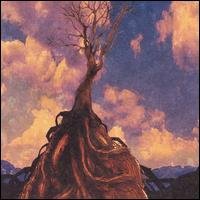Murder by Death's Who Will Survive and What Will Be Left of Them? is a sure portrait of what happens when the Devil is alive and well and living in the Old West, conveyed by thick alt-country overtones and jaunty, liquor-swilling showdowns with tumbleweed bustling by in the background. That the band manages to leave almost that entire scenario behind in In Bocca al Lupo -- while still hinting at it occasionally -- should be impressive enough on its own; that they draw from an extraordinary set of elements both sonically, textually, and thematically just makes the progression all the more admirable.
Immediately the record offers a diverse array of individual circumstances -- guitarist and vocalist Adam Turia puts forth a creepy, breathy creak of singing style in "One More Notch" that sounds like he's leading the band through the crunch of dead grass in some remote forest while a subtle salsa rhythm propels the song, and the pirate ship waltz of "Dead Men and Sinners" rallies the buccaneers in less than two minutes for Lupo's shortest offering. "Brother" moves at a pace likened to a bumping wagon-wheel, while "Dynamite Mine" is a careful, sordid forewarning of sorts. "Raw Deal" surprisingly plays around with atmospheric post-rock guitars. Horns are integrated with seeming necessitation in "The Organ Grinder," "Sometimes the Line Walks You," and "The Big Sleep." A choir gives a Southern hymn charm to "The Big Sleep" and "The Devil Drives." Sarah Balliet's cello adds to the dramatic flair prevalent through and through, her keys giving a bouncy flavor to the more tempo-driven tracks. It's surely a stunning, complicated mix of influences and tools applied for the 43 minutes Lupo travels, always with a twang but one constantly bent on yet another angle.
An exceptionally woeful set of dark, morose narratives are found in the album's second half. "The Big Sleep" depicts a self-explanatory scenario, while "Shiola" tells of a humble father making his best efforts in raising a son -- this also brings us to one strongly consistent theme throughout: the elements of family values. "Brother" rings with sibling pride, Turia promising to protect his own from the law ("I know there's better brothers, but you're the only one that's mine"), while the aforementioned "The Big Sleep" is sure to ask witnesses of the execution to "tell my wife and kids I never meant for this to happen," Turia's voice wailing the latter part of the line. It should be mentioned that the front-man's picturesque description techniques are enticing and dreadfully captivating, and that's where Lupo's strength is surely lying in; he uses simple, storytelling imagery that paints pictures with strokes matching the talents of any physical artist.
As well, all throughout Lupo's duration, it seems as though Turia has been studying the Johnny Cash discography closely; his sneering baritone, while exhibiting a variety of moods, seems an eerily close reflection of The Man in Black even while the band takes that musical influence into an entirely different genre.
The layout is perfectly illustrated, offering black and white sketches acting as scenes from the album on one side and the long, twisting roots of a tree on the other side that lead down to the rings of fire surrounded by winged compatriots of Satan himself seemingly.
In Bocca al Lupo is a complex record, one that takes time to sink in. However, its compelling narratives are an immediate draw, Adam Turia telling of the importance of love, family and companionship through an eclectic variety of performances that takes the listener on a road composed of various inclines and surfaces; for every block of "steam rising off the gravel," there's a "patch of fresh dirt" waiting to be traversed.
![]() Brother
Brother
STREAM
In Bocca al Lupo
VIDEO
Brother
E-CARD

